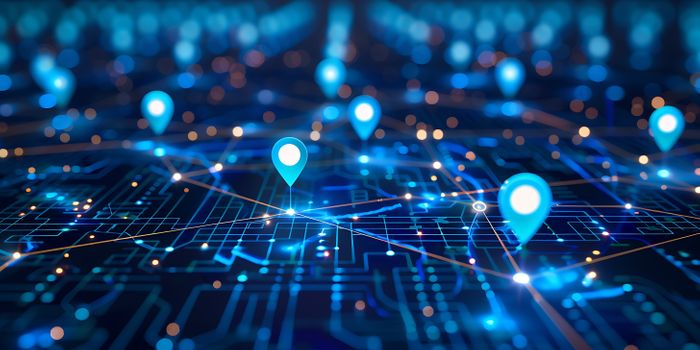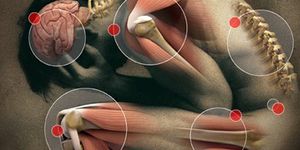To decide whether and where to move in the body, cells need to read chemical signals in their environment—and they don’t act alone during the process.
Instead, two new studies published in the Proceedings of the National Academy of Sciences show they make decisions collectively after exchanging information about the chemical messages they are receiving.
“Cells talk to nearby cells and compare notes before they make a move,” says Ilya Nemenman, a theoretical biophysicist at Emory University.
Researchers discovered that the cell communication process works similarly to a message relay in the telephone game. “Each cell only talks to its neighbor,” Nemenman says. “A cell in position one only talks to a cell in position two. So position one needs to communicate with position two in order to get information from the cell in position three.”
And like the telephone game—where a line of people whisper a message to the person next to them—the original message starts to become distorted as it travels down the line. The researchers found that, for the cells in their experiments, the message begins to get garbled after passing through about four cells, by a factor of about three.
“We built a mathematical model for this linear relay of cellular information and derived a formula for its best possible accuracy,” Nemenman says. “Directed cell migration is important in processes from cancer to the development of organs and tissues. Other researchers can apply our model beyond the mouse mammary gland and analyze similar phenomena in a wide variety of healthy and diseased systems.”
Since at least the 1970s, and pivotal work by Howard Berg and Ed Purcell, scientists have been trying to understand in detail how cells decide to take an action based on chemical cues. Every cell in a body has the same genome but they can do different things and go in different directions because they measure different chemical signals in their environment. Those chemical signals are made up of molecules that randomly move around.
“Cells can sense not just the precise concentration of a chemical signal, but concentration differences,” Nemenman says. “That’s very important because in order to know which direction to move, a cell has to know in which direction the concentration of the chemical signal is higher. Cells sense this gradient and it gives them a reference for the direction in which to move and grow.”
Cell-to-cell interaction
Berg and Purcell understood the best possible margin of error—the detection limit—for such gradient sensing. During the subsequent 30 years, researchers have established that many different cells, in many different organisms, work at this detection limit. Living cells can sense chemicals better than any man-made device.
It was not known, however, that cells can sense signals and make movement decisions collectively.
“Previous research has typically focused on cultured cells,” Nemenman says. “And when you culture cells, the first thing to go away is cell-to-cell interaction. The cells are no longer a functioning tissue, but a culture of individual cells, so it’s difficult to study many collective effects.”
The
first paper drew from 3D microfluidic techniques from the Yale University lab of Andre Levchenko, a biomedical engineer who studies how cells navigate; research on mouse mammary tissue at the Johns Hopkins lab of Andrew Ewald, a biologist focused on the cellular mechanisms of cancer; and the quantification methods of Nemenman, who studies the physics of biological systems, and Andrew Mugler, a former post-doctoral fellow in Nemenman’s lab at Emory who now has his own research group at Purdue.
The 3D microfluidics allowed the researchers to experiment with functional organoids, or clumps of cells. The method does not disrupt the interaction of the cells. The results showed that epidermal growth factor, or EGF, is the signal that these cells track, and that the cells were not making decisions about which way to move as individuals, but collectively.
“The clumps of cells, working collectively, could detect insanely small differences in concentration gradients—such as 498 molecules of EGF versus 502 molecules—on different sides of one cell,” Nemenman says. “That accuracy is way better than the best possible margin of error determined by Berg and Purcell of about plus or minus 20. Even at these small concentration gradients, the organoids start reshaping and moving toward the higher concentration. These cells are not just optimal gradient detectors. They seem super optimal, defying the laws of nature.”
Collective cell communication boosts their detection accuracy, turning a line of about four cells into a single, super-accurate measurement unit.
In the
second paper, researchers looked at the limits to the cells’ precision of collective gradient sensing not just spatially, but over time. “We hypothesized that if the cells kept on communicating with one another over hours or days, and kept on accumulating information, that might expand the accuracy further than four cells across,” Nemenman says. “Surprisingly, however, this was not the case. We found that there is always a limit of how far information can travel without being garbled in these cellular systems.”
Together, the two papers offer a detailed model for collective cellular gradient sensing, verified by experiments in mouse mammary organoids. The collective model expands the classic Berg-Purcell results for the best accuracy of an individual cell, which stood for almost forty years. The new formula quantifies the additional advantages and limitations on the accuracy coming from the cells working collectively, Nemenman says.
“Our findings are not just intellectually important. They provide new ways to study many normal and abnormal developmental processes.”
This article was originally published on
futurity.org.









